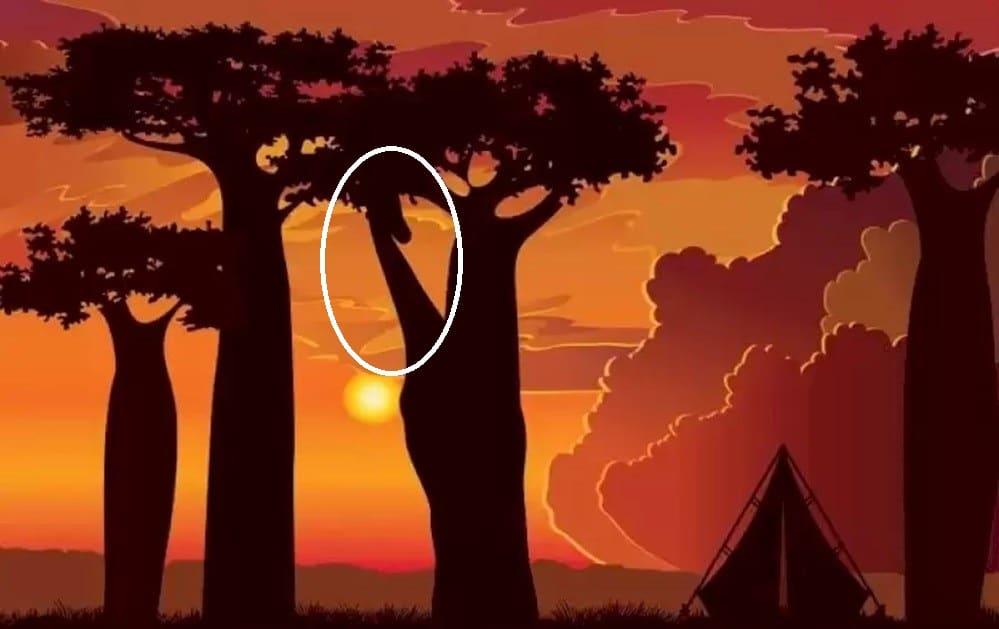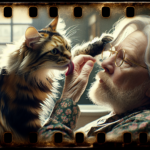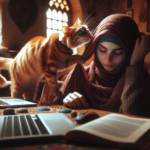Contents
Welcome to the world of optical illusions, where artistry meets deception.
Prepare to be mesmerized as we present you with a unique visual puzzle that will put your senses to the ultimate test.
In this stunning sunset scene, there’s more than meets the eye. Can you spot the elusive giraffe camouflaged within the vibrant hues of the sky? Take on this captivating challenge and join the elite 2% who can see what others miss.
The art of optical illusions
Prepare to enter a realm where reality and illusion dance in harmony.
Optical illusions are captivating works of art that play with our perception and challenge the way we see the world. These mind-bending creations can trick our eyes into perceiving something that isn’t truly there.
Through clever manipulation of colors, shapes, and patterns, artists and designers have crafted optical illusions that continue to mesmerize and amaze us.
In the realm of optical illusions, a keen eye is essential. These mesmerizing visual puzzles push the boundaries of our perception and put our visual acuity to the test.
Spotting hidden objects, deciphering ambiguous figures, and discerning subtle details require exceptional observation skills.

By engaging with optical illusions, we can train our minds to become more attuned to the nuances of visual information, ultimately enhancing our ability to perceive the world around us.
Let’s dive into the enchanting sunset scene before us. The warm glow of the setting sun bathes the landscape in a stunning array of colors.
The trees come alive, their branches swaying gently in the breeze. But wait, there’s more to this picturesque scene than meets the eye.
Within the depths of this canvas lies a cleverly concealed giraffe, blending seamlessly with its surroundings. Can you unravel this optical riddle and spot the hidden creature within a mere 5 seconds?
Time is of the essence as we embark on this exciting quest to uncover the elusive giraffe.
Fix your gaze upon the vibrant sunset scene and let your eyes roam meticulously.
Trust your instincts, for in this optical illusion, rapid observation and quick thinking are the keys to success.
As you immerse yourself in the pursuit of the hidden giraffe, take a moment to appreciate the intricate nature of your own observation skills. Go ahead look at the image below and see if you can decipher where the giraffe is lurking!

The ability to perceive details, recognize patterns, and detect subtle variations is paramount in deciphering optical illusions. Did you find the giraffe?
By engaging in such challenges, you sharpen your cognitive faculties, fostering an astute awareness of your surroundings and honing your capacity to spot hidden elements that elude the untrained eye.
How do optical illusions work?
The allure of optical illusions lies in their ability to deceive our minds. But how exactly do they work? Behind the veil of illusion lies a fascinating interplay between our visual system and the way our brain processes information.
Optical illusions exploit the brain’s reliance on context, perspective, and assumptions, leading us to perceive images in ways that defy logic.
By unraveling the science behind these captivating illusions, we gain a deeper appreciation for the complex workings of our visual perception.
Your successful navigation through this optical illusion speaks volumes about the incredible capabilities of your brain. The cognitive processes at work – from attention and memory to pattern recognition and problem-solving – all play a vital role in deciphering visual puzzles.
Your brain swiftly fills in the missing pieces, connects the dots, and unravels the hidden secrets within the image. By embracing optical illusions, you nurture and enhance your analytical skills, paving the way for greater cognitive agility and creative thinking.
Answer revealed!
Where is the hidden giraffe? Did you manage to catch a glimpse of it? Let’s see if you got it right….
Just take a loook at the image below with the answer revealed! Optical illusions serve as delightful playgrounds for our minds, captivating us with their mesmerizing allure and challenging us to see beyond the obvious.

Congratulations, visionary explorer! By successfully spotting the hidden giraffe within the breathtaking sunset scene, you’ve proven yourself to possess remarkable analytical prowess, unwavering concentration, acute attention to detail, and a dash of artistic flair.
Your brain is a marvel, swiftly piecing together information and filling in the gaps to unravel this captivating optical illusion.
Optical illusions not only entertain but also challenge our cognitive abilities, fostering creativity, enhancing intelligence, and sharpening our observation skills.
So, continue exploring the world of optical illusions, where captivating secrets await those who dare to look beyond the surface. Keep challenging your senses, and let your imagination soar amidst the wonders of visual deception.
More challenges here:
Find the tiny terrapin brain teaser challenge: can you spot it in less than 5 seconds?





